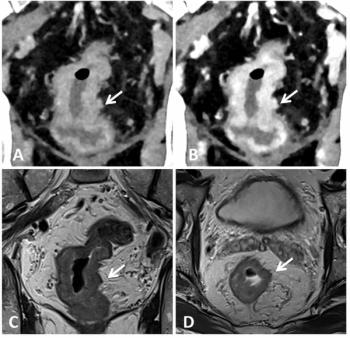
PET/MRI Motion Correction Aids in Quantifying, Detecting PET-Avid Lesions
Motion correction has potential to affect diagnosis or patient care.
There was better quantification and detection of PET-avid lesions with the addition of a motion correction algorithm, according to a study published in the
Researchers from the United Kingdom sought to determine the ability of their joint PET/MRI-based predictive motion model to correct respiratory motion in PET, demonstrating that the algorithm could improve lesion detectability and quantitation and reduce image artifacts.
Forty-two clinical PET/MRI patient datasets containing 162 PET-avid lesions were included in the study. The researchers used multiple tracers and multiple organ locations to apply their motion correction method to the datasets. Quantitative changes were calculated using SUV changes in avid lesions. Lesion detectability changes were explored with a study; two radiologists identified lesions in uncorrected and motion-corrected images and provided confidence scores.
The results showed mean increases of 12.4% for SUVpeak and 17.6% for SUVmax after motion correction were found. In the detectability study, confidence scores for detecting avid lesions increased, with a rise in mean score from 2.67 to 3.01 (of 4) after motion correction and a rise in detection rate from 74% to 84%. Of 162 confirmed lesions, 49 showed an increase in all three metrics-SUVpeak, SUVmax, and combined reader confidence score-whereas only two lesions showed a decrease.
The researchers also presented clinical case studies that demonstrated the effect of respiratory motion correction of PET data on patient management, with increased numbers of detected lesions, improved lesion sharpness and localization, and reduced attenuation-based artifacts.
They concluded that there were significant improvements in quantification and detection of PET-avid lesions, with specific case study examples showing where motion correction has the potential to affect diagnosis or patient care.
Newsletter
Stay at the forefront of radiology with the Diagnostic Imaging newsletter, delivering the latest news, clinical insights, and imaging advancements for today’s radiologists.



























